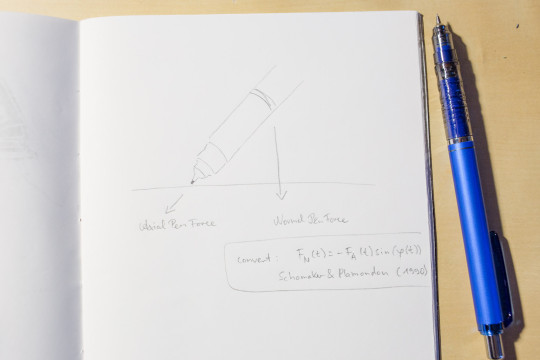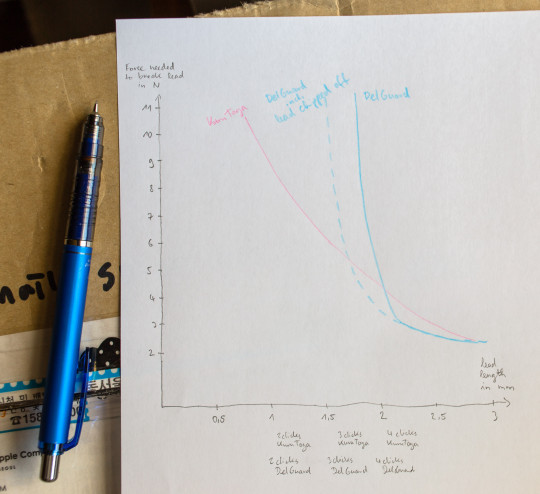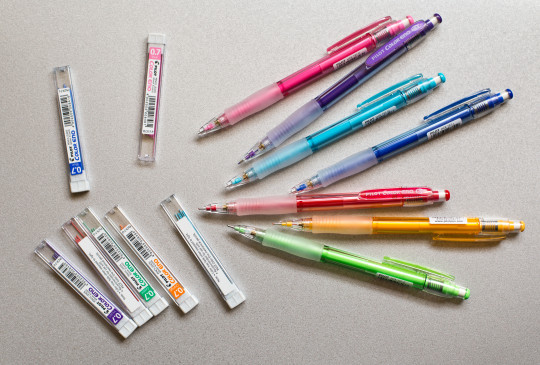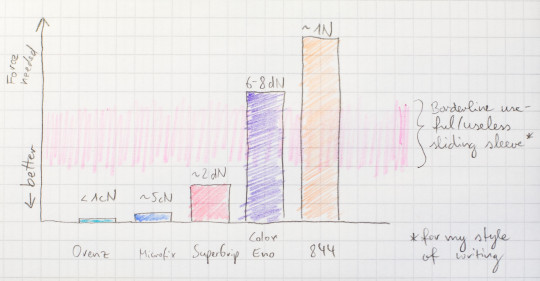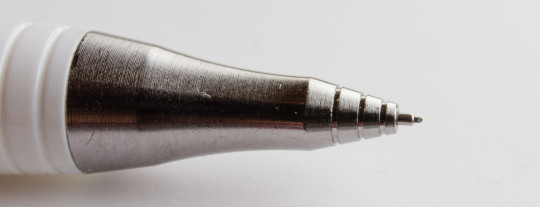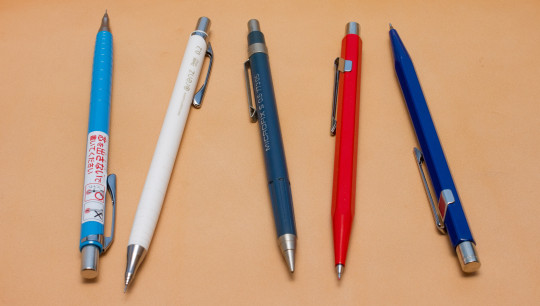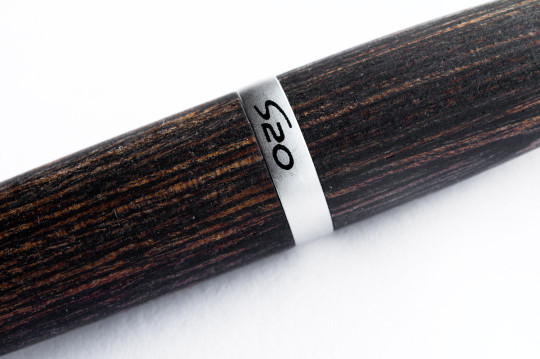Rotring rapid PRO 0.5
During my hunt for the perfect sliding sleeve pencil I came across the Rotring rapid PRO 0.5. I’m looking for a sliding sleeve that slides back easily enough so that I can keep writing while the lead is worn down – without having to advance the lead all the time.
I bought the rapid PRO for £18.95 (~$29; €26) from Pilotfishpens on eBay. It usually sells for about £25 in the UK.
A well reviewed pencil
Having bought it because of its sliding sleeve I was aware of and have read reviews of the pencils, but every blog post or review pays attention to very different details, so if you are interested in this pencil please look at the other reviews (see list at the bottom of this blog post), they might contain more of the information you might be after – oh, well infinite diversity in infinite combinations.
Rotring
As far as Rotring mechanical pencils go, this is a fairly new model. It has been released many years after Sanford / Newell Rubbermaid took over. You can find more of my thought about how Rotring changed since Sanford / Newell Rubbermaid took this company over in my blog post about the Rotring Newton.
Looks – stunningly beautiful
I read Dave’s review and I have also seen reviews of other Rotring pencils with a similar surface, but I didn’t expect such a good looking pencil! The finish, matt but also reflective, is absolutely beautiful. I tried to capture it using HDR, a technique Lexikaliker has used many times on his blog, but the photo doesn’t show the real beauty of this pen in any way.
Other observations
The knurled grip area is metal, but the knurling is so fine, dust and small particles will stick to it. Nice looking, good to grip, but not easy to clean.
The lead it comes with is (for my taste) ridiculously soft. I like harder leads. This one is nice and dark, but gets worn down very fast.
The red ring is plastic, so the colour wouldn’t come off, as is common on Rotring Tikkys. Most parts are metal, but some parts, like the red ring and the screw threads, as well as the mechanism holding the sliding sleeve, are plastic. I wonder whether the pen will one day fail because of some cheap plastic parts, as was the case with my Rotring Newton, which didn’t last long at all
Sliding sleeve
The sliding sleeve, the main reason why I bought this pencil was a disappointment. You need even more force to slide this sleeve than you need to slide the sleeve of the Caran d’Ache 844, the worst performing sliding sleeve in a previous comparison. This renders one of the main advantages of a sliding sleeve, not having to forward the lead all the time, useless.
I really love the look of this pencil, so in the end I made a minor modification to make this pencil work for me (more about this in another blog post). The diagram shown here, comparing the force needed to slide the sleeve of different pencils, does however represent an off the shelf, unmodified Rotring rapid PRO 0.5.
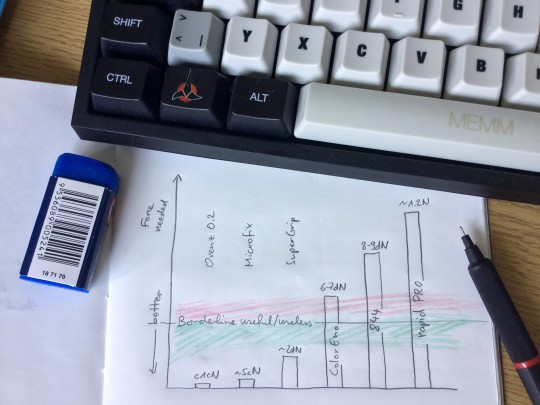
Conclusion
A beautiful pencil. Not cheap, but also not one of the really expensive ones. I love the look. The sliding sleeve is too stiff for my taste, but can be adjusted if you don’t mind voiding your warranty. I hope it will last a long time and won’t fail because of some of the plastic components used.
As usual, please open images in a new tab for a high resolution version.
Price: September 2015.
Exchange rates: October 2015.
More about sliding sleeves in this blog post about their disappearance and this blog post about the Color Eno.
More reviews of the Rotring rapid PRO at
- Dave’s Mechanical Pencils
- Klecser (he also made a video review)
- One Lone Man’s Pens and Pencils
- Little Flower Petals
- Misfra.me (nice pictures)
The notebook is handmade by Shangching. It’s not the first time you can see it in a blog post on Bleistift. I should really write a blog post about this notebook.
Rotring rapid PRO 0.5 Read More »


